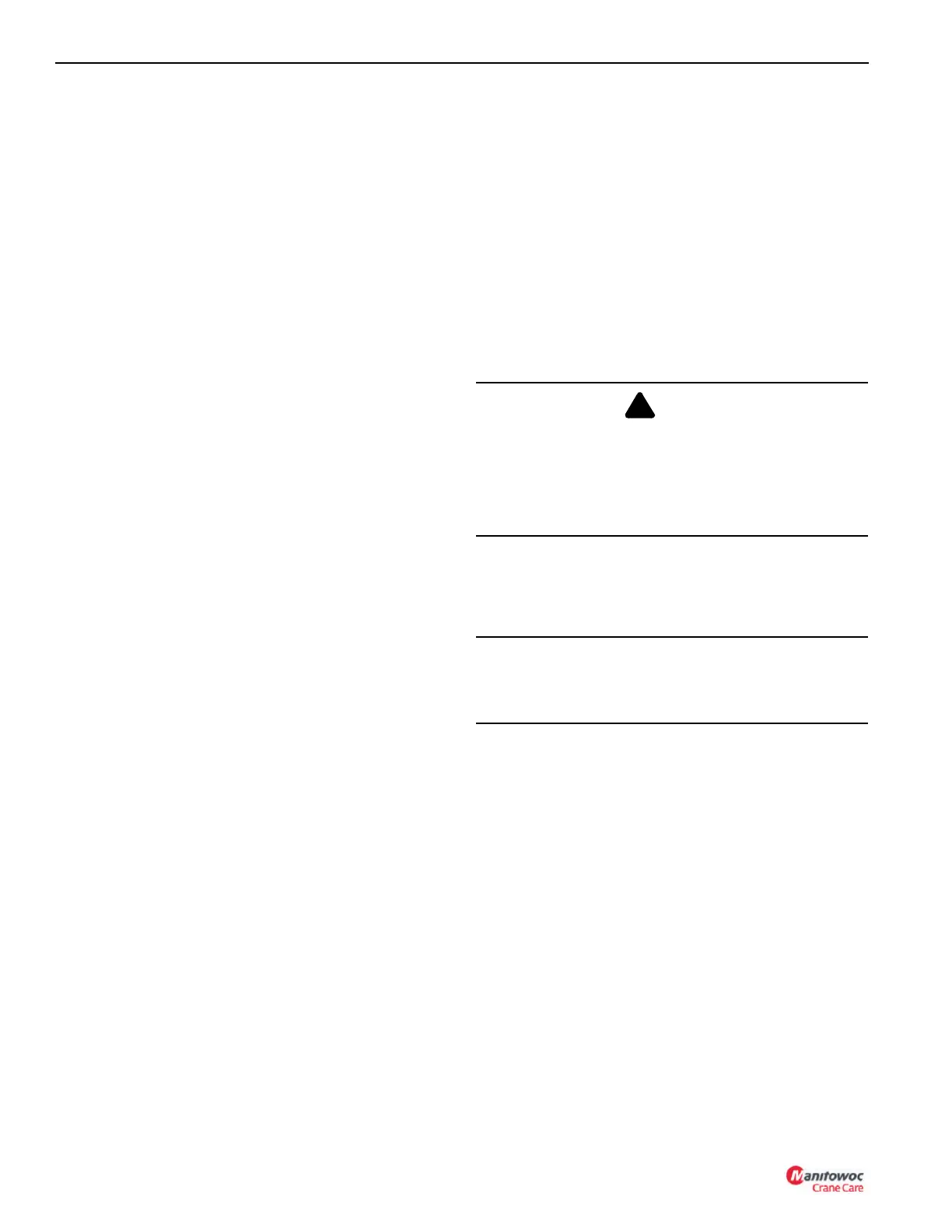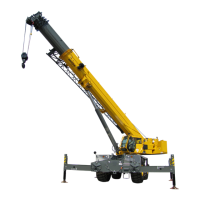SWING 1300A
6-8 01-22-2019 Control # 051-08
3. Gently slide the brake piston (10) into the brake housing.
Press down on the piston with the heal of both hands to
squeeze the o-rings into the housing. Push the piston
completely down into the housing.
4. Install the brake driver (12) into the brake housing by
pushing down until the bearing shoulder on the driver is
seated against the bearing. Be sure that retaining rings
(11 and 13) are installed in the driver.
5. Install stator plates and the friction discs into the brake
housing in exactly the same order that they were
removed. Note that two stator plates are stacked
together in the center of the stack. Be careful not to
contaminate the friction surfaces with dirt, grease or fluid
media other than what is specified for your brake. Note:
If installing new friction discs, soak all discs in specified
fluid media for approximately 10 minutes before
installation.
6. Pour fluid media into the brake housing (3) until it is level
with the top of the brake discs and stator plates.
7. If replacing the brake piston o-rings (17 and 18) be sure
to reinstall the o-rings and their backup rings (16 and 19)
in the same order in which they were removed. Lubricate
o-rings and backup rings with hydraulic oil to aid in their
assembly.
8. Gently slide the park brake piston (20) into the brake
housing. Press down on the brake piston using the heel
of both hands. This will squeeze the o-rings into the case
and set the brake piston against the stator plates.
9. Insert the brake springs (21) into the brake piston.
10. Lubricate the o-ring (22) with hydraulic oil and install on
the brake cover (23).
11. Carefully set the brake cover on top of the piston springs
so they remain upright on the brake piston.
Start the eight capscrews (24) into the brake housing by
hand. Alternately tighten the capscrews one turn at a time
until the cover is tight against the brake housing. Torque the
capscrew to 30 - 35 ft-lb (41 - 47 N·m).
SWING BEARING
Description
The swing bearing is an anti-friction roller bearing that mates
the turret to the carrier. The bearing inner race is bolted to
the turret and the outer race is bolted to the Carrier. The
inner race contains four grease fittings for lubrication of the
bearing. The outer race incorporates gear teeth that mesh
with the pinion gear of the swing gearbox to provide rotation.
SWING BEARING MAINTENANCE
General
The swing bearing is the most critical maintenance point of
the crane. It is here, at the centerline of rotation, that
stresses of loads are concentrated. In addition, the bearing
provides the only attachment between the turret and carrier.
Therefore, proper care of the bearing and periodic
maintenance of the turret-to-bearing attach bolts IS A MUST
to ensure safe and efficient operation.
TORQUING SWING BEARING BOLTS
General
Maintaining proper torque value for bolts is extremely
important for structural strength, performance, and reliability
of the crane. Variations in torque can cause distortion,
binding, or complete separation of the turret from the carrier.
Proper identification of bolt grade is important. When marked
as a high strength bolt (grade 8), the serviceman must be
aware of bolt classifications and that he is installing a high
strength heat-treated tempered component and the bolt
must be installed according to specifications. Special
attention should be given to the existence of lubricant and
plating that will cause variation from dry torque values. When
a high strength bolt is removed, or un-torqued, the bolt must
be replaced with a new bolt of the same classification.
KNOW YOUR TORQUE WRENCH! Flexible beam type
wrenches, even though they might have a pre-set feature,
must be pulled at right angle and the force must be applied at
the center of the handle. Force value readings must be made
while the tool is in motion. Rigid handle type, with torque
limiting devices that can be pre-set to required values,
eliminate dial readings and provide more reliable, less
variable readings.
NOTE: If multipliers and/or special tools are used to reach
hard to get at areas, ensure torque readings are
accurate.
DANGER
It is mandatory that swing bearing and T-box attaching
bolts be inspected and re-torqued after the first 300 hours
of crane operation and every 500 hours thereafter. The
bolts may loosen and cause the crane to separate from
the carrier which will result in damage to the crane and
possible injury or death to personnel.
CAUTION
Repeated re-torquing may cause bolts to stretch. If bolts
keep working loose, they must be replaced with new bolts
of the proper grade and size.

